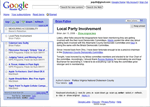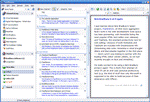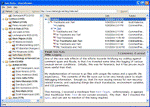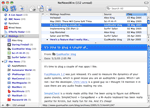http://www.washingtonpost.com/wp-dyn/content/article/2008/03/31/AR2008033100704.html?nav%3Drss_opinion/columns&sub=AR
By Jay Mathews
Washington Post Staff Writer
Monday, March 31, 2008; 10:19 AM
Who is going to be our next education president? I know, but I'm not telling. Most of The Washington Post's political reporters these days are young, strong and potentially dangerous. They have warned me about previous attempts to tread on their turf. So I am going to confine myself to helpful advice for our future chief executive, without revealing that person's name.
I have gotten some astute assistance in this effort from Sharon L. Nichols, an educational psychologist who is an assistant professor at the University of Texas at San Antonio, and David C. Berliner, Regents' Professor of education at Arizona State University. Their 2007 book "Collateral Damage: How High-Stakes Testing Corrupts America's Schools" is the latest selection to our Better Late Than Never Book Club, this column's way of spotlighting good work that I really should have read when it appeared months, sometimes years, before.
Nichols and Berliner attack from all sides the state testing that we use to assess schools under the No Child Left Behind law. Their analysis is clear, their arguments strong. What particularly impressed me was their willingness to suggest viable alternatives to testing as a way for us voters, parents and taxpayers to know which of our schools are doing well and which are not, a service to which some critics of testing seem to think we are not entitled.
Here are their four major suggestions, in the order they gave them, with their own titles. It is important to read the book to get the analysis in depth, but this should whet your appetite. The authors do not see these approaches as separate from each other, but as part of a network of assessments that would be both deeper and more helpful than the typical high-stakes state tests given at the end of a school year:
1. Formative assessments: Assessment for learning, not assessment of learning. Formative assessments are the many tools that teachers use to keep track of how their students are doing---start-of-class quizzes, discussion, projects, homework, chapter tests. They are different from summative assessments, such as final exams or state tests. Nichols and Berliner quote British scientist Paul Black's apt definitions: "When the chef tastes the soup it is formative assessment; when the customer tastes the soup it is a summative assessment." Some of us customers still want to see state test results, but Nichols and Berliner cite data suggesting that formative assessments, in skilled hands, are more likely to get the achievement gains we desire, since in the back-and-forth of examining the results of each small formative assessment, a great deal of learning occurs.
2. An inspectorate. Nichols and Berliner admire the school inspection systems used in Australia, England, Holland, Germany, Sweden and a few other countries. They describe very detailed and sophisticated visits, interviewing both teachers and students and others involved in the education process, to see if standards are being maintained and progress made. If this system worked, it would have real benefits. But it is terribly expensive---in Britain, they can only afford to do each school every six years---and it reawakens in me bad memories of the reports issued by regional school accreditation committees that operate in many parts of this country. Rarely have I seen prose more tortured or less comprehensible. Often such visits involve buddy-buddy relationships that teeter on the edge of conflicts of interest. So it is a promising idea, but I would have to see it executed better than I have seen in the past.
3. End-of-course examinations. Here, I think they are on to something. They propose that high-stakes state tests be junked in favor of local tests written by teachers and tied closely to actual courses. They cite as models the Standards of Learning tests in Virginia, which I have been watching closely for a decade. There are high school SOL tests for algebra, biology, American history and several other subjects. The tests and questions were designed by Virginia teachers, and are embraced by many critics of No Child Left Behind. Nichols and Berliner do not like the fact that the Virginia tests are high-stakes--a student has to pass six of them to graduate from high school. But you get the idea. I am a little surprised that they did not mention Advanced Placement and International Baccalaureate as models for this approach, since they have the additional merit of a testing standard that cannot be corrupted, and is based on a result that everyone considers useful to the students themselves---being able to master introductory college material. Another advantage of this approach is that it is less expensive (and well as more comprehensible to outsiders) than their other suggestions. Less money spent on assessments could mean more money to pay teachers.
4. Performance tests, including project and portfolio defenses, before judges. The authors celebrate here my favorite example of this alternative to high-stakes testing, the Central Park East Secondary School created by a group of teachers led by the legendary Deborah Meier. High schoolers at CPESS were treated like graduate students, working on major papers and other projects, and being judged by committees of experts. This is a wonderful alternative to state testing, if the teachers and administrators are as good as Meier and company. But it can be expensive and leaves us voters and taxpayers somewhat out in the cold. We don't have time to sit in on all those oral exams.
All four of these ideas have potential. I think the best choice for critics of high-stakes tests is to show us what they've got. Create independent schools like CPESS--charters or pilots or privates, whatever---and try out some of these alternative assessments. If they work, they will be noticed by many, including the next president.
















